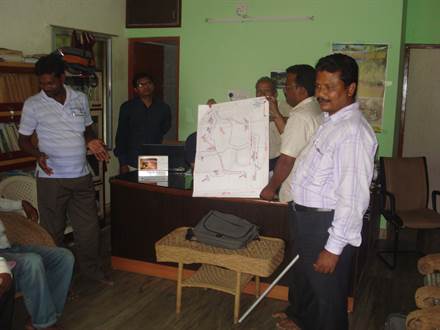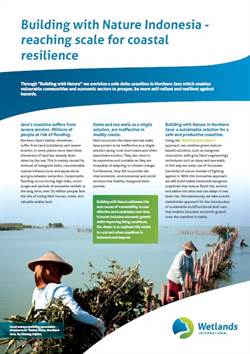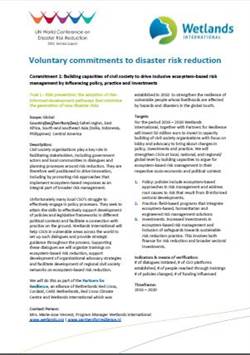
Wetlands International’s voluntary commitments to reducing disaster risk
-
Coastal resilience
-
Coastal wetland conservation
-
Community resilience
-
Integrated delta management
Wetlands International submitted three voluntary commitments to reducing disaster risk for the next 5-10 years to UNISDR. Voluntary commitments from organisations like Wetlands International and individuals are seen as an essential compliment to legal obligations for protecting lives, livelihoods, assets and the environment and will be one cornerstone of implementation of the post 2015 framework for disaster risk reduction.
1: Building capacities of civil society to drive inclusive ecosystem-based risk management by influencing policy, practice and investments

Civil society organisations play a key role in facilitating stakeholders, including government actors and local communities in dialogues and planning processes around risk reduction. They are therefore well positioned to drive innovation, including by promoting risk approaches that implement ecosystem-based responses as an integral part of broader risk management.
Unfortunately many local CSO’s struggle to effectively engage in policy processes. They seek to attain the skills to effectively support development of policies and legislative frameworks in different political contexts and facilitate a connection with practice on the ground. Wetlands International will, as part of the Partners for Resilience, help CSOs in vulnerable areas across the world to set up such dialogues and provide strategic guidance throughout the process.
Where: Sahel region, East Africa, South-and southeast Asia (India, Indonesia, Philippines) Central America
2: Safeguarding and restoring wetlands to reduce water related risks

More than 90% of all extreme events are water related. Their frequency and intensity is rising: more and more people experience water scarcity and suffer the impacts of major floods, droughts, storms and water-related diseases. Much of this increase in vulnerability is the result of the degradation of wetlands, such as floodplains, mangroves and peatlands and loss of their capacity to regulate water flows, protect coastlines and provide fish and other resources.
Wetlands International will:
- Conserve high-value more or less intact wetland environments for their full range of values. We do so through a site-based conservation planning approach, as well as by addressing threats that emerge elsewhere along the coast or upstream.
- Restore degraded and heavily modified landscapes, by restoring wetlands and their values, thus reducing disaster risk and optimizing production systems that sustainably benefit from wetland services.
Where: Niger basin, Senegal basin, Kenya; Tanzania; West African coastline Malaysia; Indonesia; India; Central America (Pacific Coast).
3: Upscaling Building with Nature approach in Indonesia

Wetlands International sees a clear need for increased investment in risk reduction solutions that achieve optimal resilience by integrating ecosystem-based approaches in engineered designs for coastal zone and flood risk management. These approaches, known as Building with Nature, make use of the protective values of ecosystems and the dynamics of nature to add to the protection provided by infrastructure such as dams and dykes: from fighting nature, to working with and alongside nature.
We commit to implement Building with Nature in Indonesia through a multi stakeholder private public partnership to restore severely eroded coasts of Central Java and inform coastal defence approaches elsewhere in Indonesia and the region.
Where: Indonesia, options for replication elsewhere.

